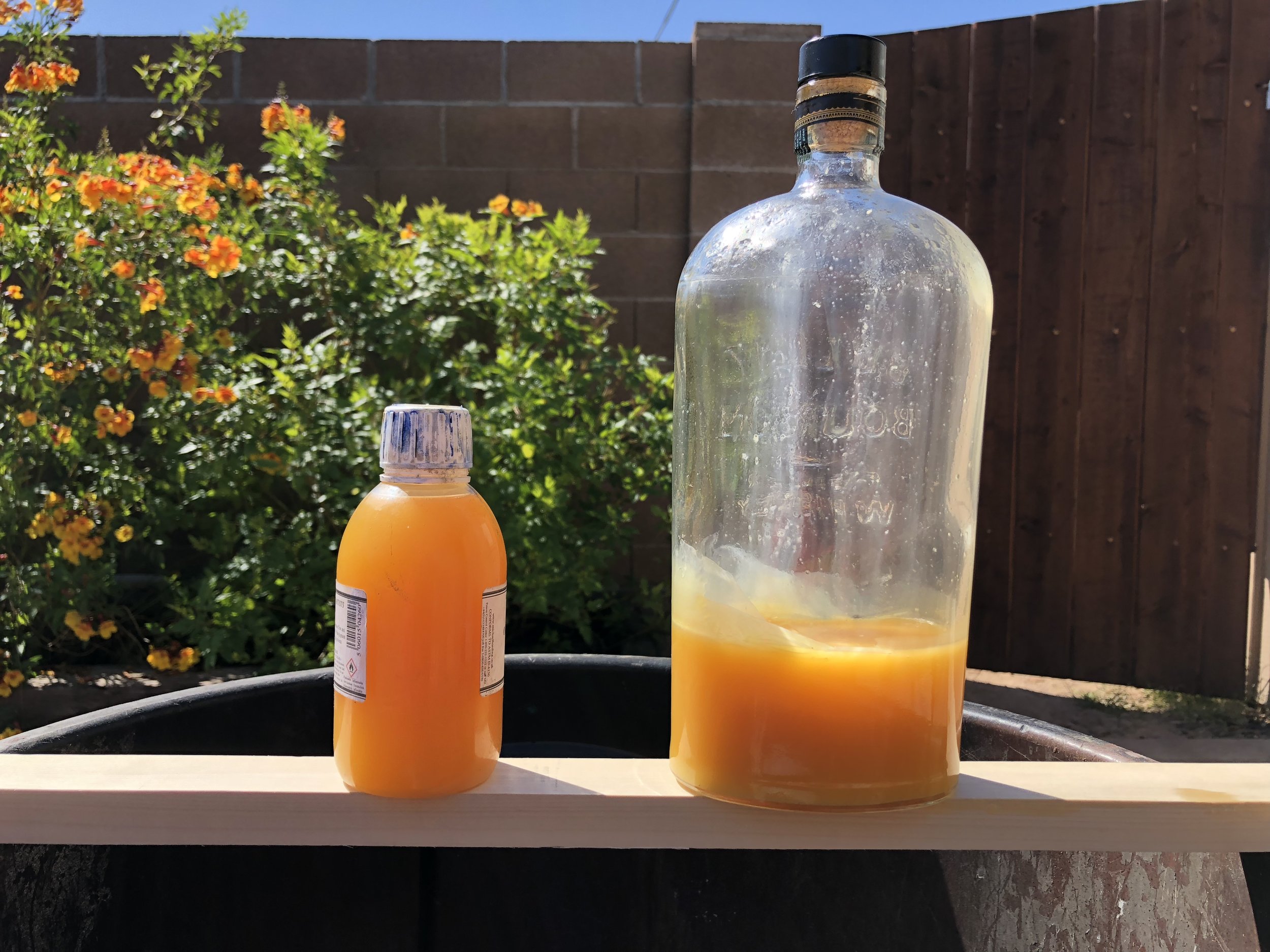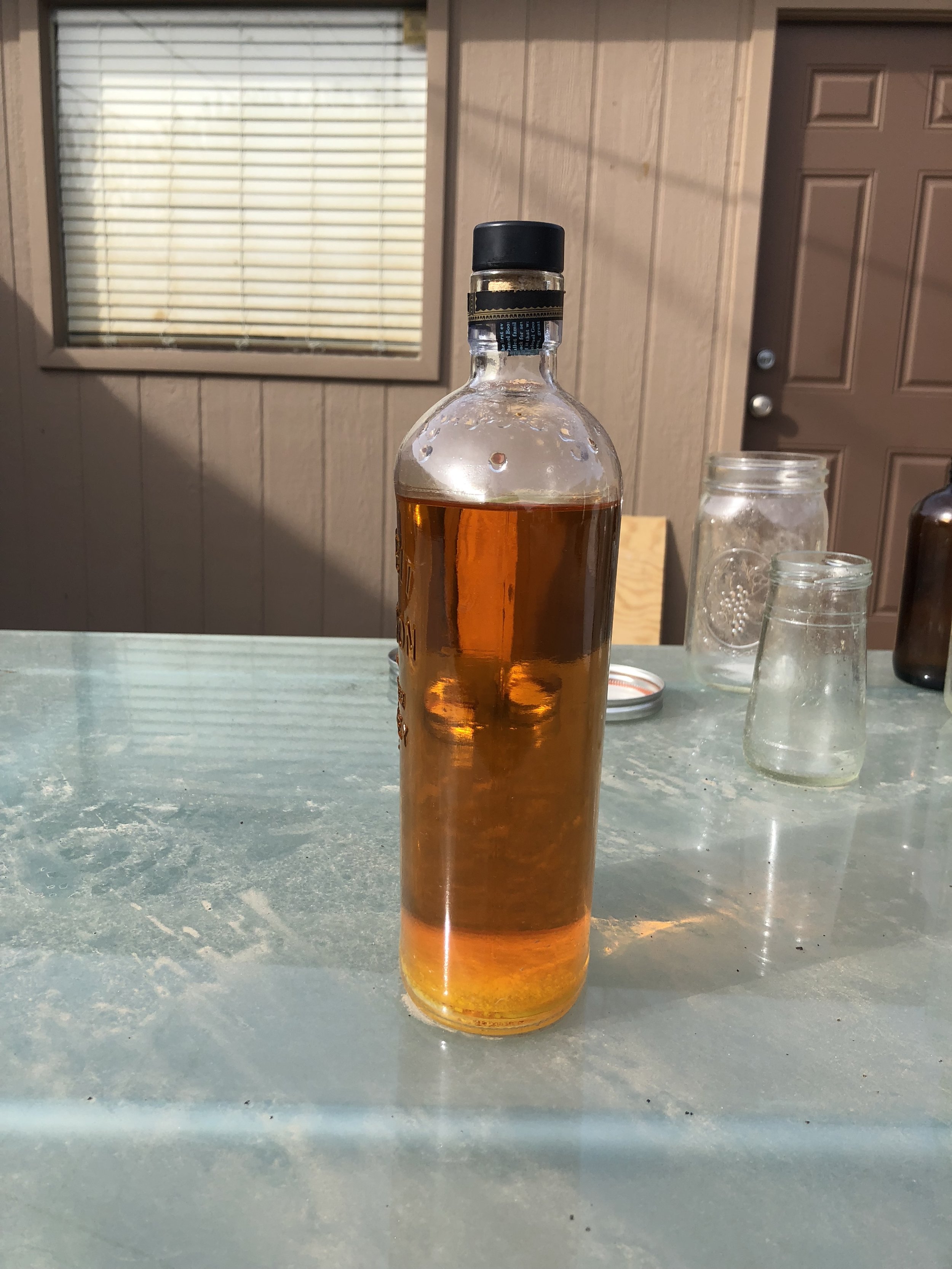This was truly a time sucker. So if you enjoy balling up your time and tossing it to the wind such as I, read on.
It is a pretty good assumption that when most painters start painting in oil, they begin to search for the "perfect" medium. Certainly I thought I would find something that would basically paint the painting for me(DISCLAIMER, there is no perfect medium). I stumbled on to Marc Dalessio's blog and saw that he was using something called "De Meyrne Medium." A combination of sun thickened linseed oil, Canadian balsam, and turpentine. I set out to making it from store bought goods. I wound up loving it and use it as my primary medium for oil painting. It doesn't really yellow, it has good body, and makes the paint level and brush strokes disappear. It also speeds up the drying process significantly. Using it for a glazing medium is gold and allows you thin your oil paint out to basically watercolor thinness without losing paint film strength. The balsam drys very strong and is extremely hard to dissolve with solvents unlike damar which is used as a standard in many mediums but is widely regarded now as a poor archival practice.
Marc Dalessio's blog is certainly the go to if you are interested in the medium and making it but I thought I would write some of my thoughts on making it from scratch.
The three ingredients (listed again) are sun thickened linseed oil, Canadian balsam, and turpentine.
The sun thickened linseed oil is essentially just what it sounds like. Cleaned cold pressed linseed oil that sits in a pan covered with glass and is whipped daily until you've produced your desired viscosity.
I actually bought a couple liters of raw cold pressed linseed oil off Kremer Pigments website for something like $12 a piece and went through the entirely foreign process of cleaning the oil first. This process can be found on the internet in various texts but essentially you take the cold pressed linseed oil and put it in preferably a clear large mouth container that has sealable lid. Fill it maybe half way with oil and the rest with warm water and some pool filter sand. Then shake rigorously for an extended period of time. Let emulsion separate for a day or so then freeze until the water in the container is completely solid. Pour off oil. Repeat a few times if you want it really clean, you will see just how much mucilage is in the oil.
The next optional step, is sun bleaching the cleaned oil. This consists of taking the cleaned oil in a jar and leaving it in direct sunlight all day for several weeks to months depending on how pale you want the oil. this makes the oil safe for using in whites with minimal yellowing.
Cleaned linseed oil. In glass bottle ready to be left out for a couple months to really get pale. Notice the mucilage that has settled on the bottom.
The next step is placing your cleaned, and possibly bleached oil in a lead pan. The lead pans can be made with sheets of lead which are available for cheap on Amazon. Just crimp the edges of pans and you are ready to roll. You want to pour the oil into the pan to about a half inch depth then place a piece of glass over the pan to keep heavy debris from your valuable plant syrup. Whip it up every day to oxygenate the oil and stop when its reached your desired viscosity.
Ghetto lead pan.
Ghetto lead pan with dirty glass.
I should note you want to do this with a few liters of oil at least because it takes a long time and you have the potential for accidentally wasting quite a bit.
Canadian Balsam. Unless you live next to balsam trees you ought to purchase the expensive tree sap on the internet from Natural Pigments or Kremer (Natural Pigments is way cheaper). It is expensive but you are making a medium that is pretty fantastic so its worth it. The first time I made it, I actually harvested balsam sap over a month period of time while I was in North Eastern Canada. It is a real pain in the ass to collect it but it made me really appreciate being able to buy it on the internet.
Turpentine. Old school pure double or triple rectified gum spirits are whats called for here, not odorless mineral spirits. Full odor. Turpentine. The greatest perfume ever made.
Next is combing them to make the medium. the ratio is 2/4 sun thickened linseed oil, 1/4 turpentine, 1/4 Canadian balsam. Shake vigorously. Now its time to paint. Send it!
I should note that as the oil gets thicker it will start to skim over more frequently which equates to more oil lost. The only way I found to combat this is stirring the oil more frequently, as much as 3 to 4 times a day. I used a paper paint filter which worked beautifully to remove the flys and solid lumps out of the oil. I should also say that I live in AZ. We get over 300 days of sunshine a year, so things may work exponentially faster here no matter the time of year.
Pictured is the lead pan and paper paint filter. The filters are dirt cheap and can be found at most paint stores and especially automotive paint stores. There is a a plastic mesh on the bottom so even thick low viscosity oils like this flow through. You can use a blow dryer to loosen it up for quicker flow through.
Love this mediums body and its functionality, give it a try, I am sure you will like it!





